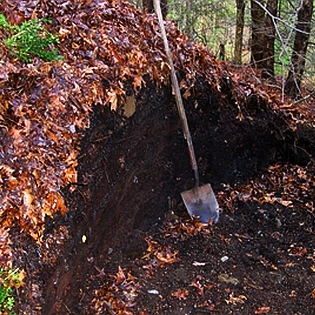 For all its charms, the weblog platform does also bury older content for no better reason than that newer material has come along. While we all like to feel we’re improving, whether you are writing blog posts, delivering babies, or making them yourself, you are likely not only as good or as interesting as your most recent effort. Neither are we.
For all its charms, the weblog platform does also bury older content for no better reason than that newer material has come along. While we all like to feel we’re improving, whether you are writing blog posts, delivering babies, or making them yourself, you are likely not only as good or as interesting as your most recent effort. Neither are we.
In remedy, the entries linked below are accompanied by brief summaries of their content, as it appeared here a year ago this week.
•
•
•
2009
New Orleans trombonist Kid Ory’s signature phrase “Let’s call the children home” is recast as a message to the lost tribes of autism.
We are many, but we’re strong only to the extent that we are self-aware—and to date, we are such a secret society, such a lost tribe, that by and large we do not even know how to recognize one another. Let alone stand up for one another, act in our own collective interests, or decide for ourselves where to go from here.
Autism is introduced as a social condition, its prevalence and history traceable as the path of a roller coaster, one which has just hit bottom and is starting again up the hill.
The autistic person is a normal person time-traveling here from the distant past to the present where his or her gifts are only about to be understood … Our genetic history is stored like a pocket roadmap of an almost endless roller coaster ride, tracking, among other things, the hormonal fluctuations of our ancestors.
• Neurodiversity, Hidden Knowledge and Hidden Talent
Seasonal light is proposed as an environmental trigger affecting hormonal regulation of the rate and timing of maturation in children, with profound effects—autism among them—varying with how rapidly their parents and fore-bearers have moved away from the equator.
Equatorial societies transplanted to radically different light environment can see explosions in autism rates. In Minnesota and Sweden Somali autism rates have skyrocketed. Consider light changes as the cause of this surge.
Stable cultures have a chance to adjust to the light of their location on the planet.
It is only now becoming evident that light can transform the features of our children, the characteristics of our culture and the direction that our species evolves. Perhaps, unconsciously, we’ve known this all along.
Insights come into view as smoke clears from the still-standing structure of a life begun in trauma. Parallels are suggested between abused humans and abused societies. Slowness is reconsidered as a value as well as a vulnerability.
Emotional trauma produces gaps in development. Autism produces two groups with different etiological origins. One group is naturally slow, sometimes encouraged by environmental changes to slow even more. In the other group, an environmental impact forced development to go awry, often unrelated to genetic based maturational rates and timing.
Traumatize a society and a similar thing occurs. Naomi Klein goes into detail with her book, Shock Doctrine. Severely abused humans and societies regress.
Excerpted from consultant William Stillman’s The Soul of Autism, an elucidation of the many and much-needed values brought to the world in the company of autism.
I have yet to meet a person with autism who has not in some capacity declared their desire to give back of themselves, to share their gifts, and to teach others. In their gentle way—as befits their nature—people with autism compel us to higher standards of deference and respect for humanity. Being present with the autistic individual requires us to be calm and refrain, to be silent and truly listen. What do you suppose people with autism have indicated they’re here to teach? The most salient themes of the human experience: tolerance, patience, sensitivity, compassion, and, of course, unconditional love. These themes consistently emerge in my work as a consultant no matter where I go.
The ability to recognize homosexuality and to recognize maturation-delay are considered together, with neoteny as a unifying factor.
Gays are neotenous. So are many of those with Asperger’s and autism. In neoteny lies a secret to our evolutionary and societal origins. Perhaps gaydar and maturation-delayed-dar are two ways of picking out these exceptionally talented and creative people that live among us.
Mark Stairwalt on 09/20/10 in Art/Play/Myth, featured | No Comments | Read More

